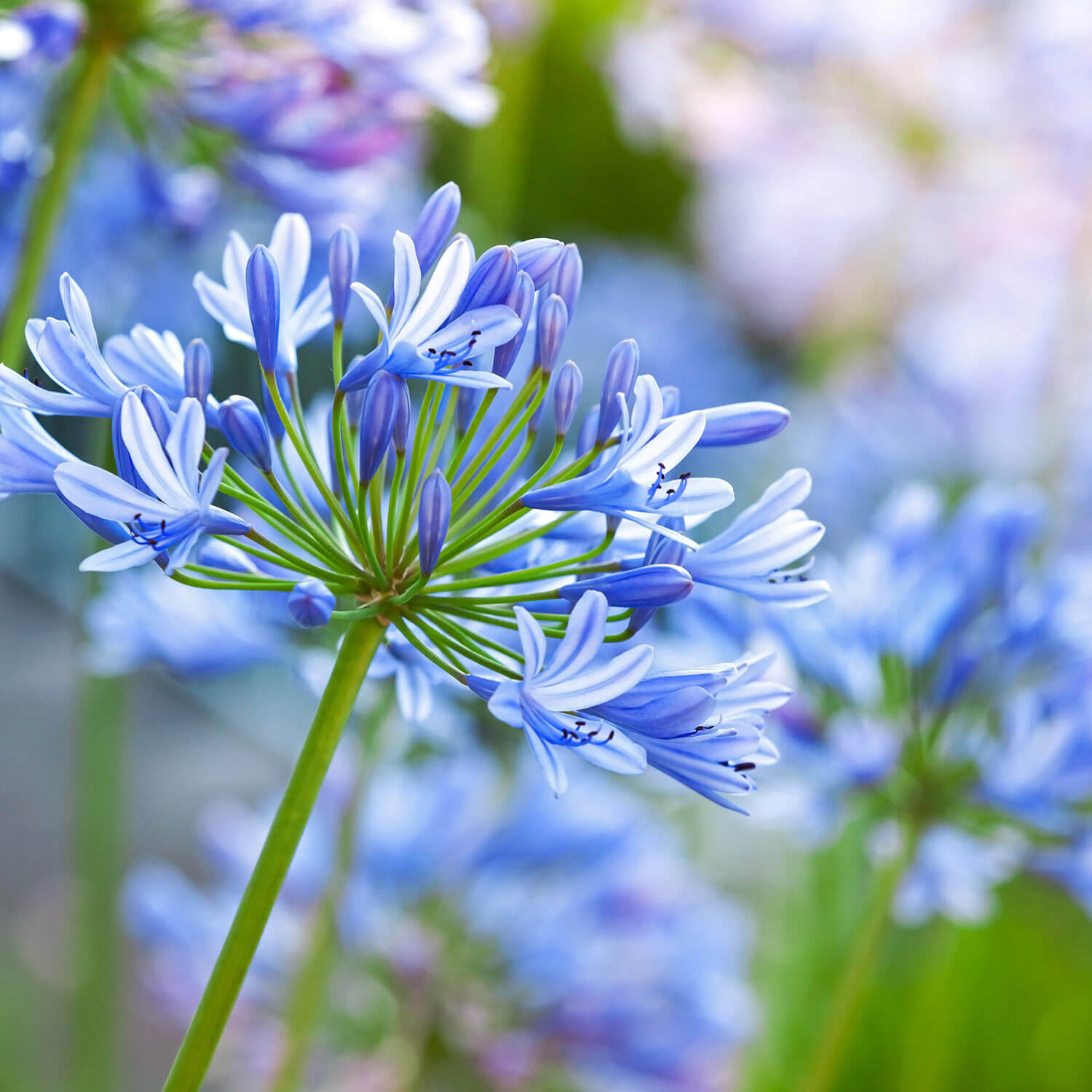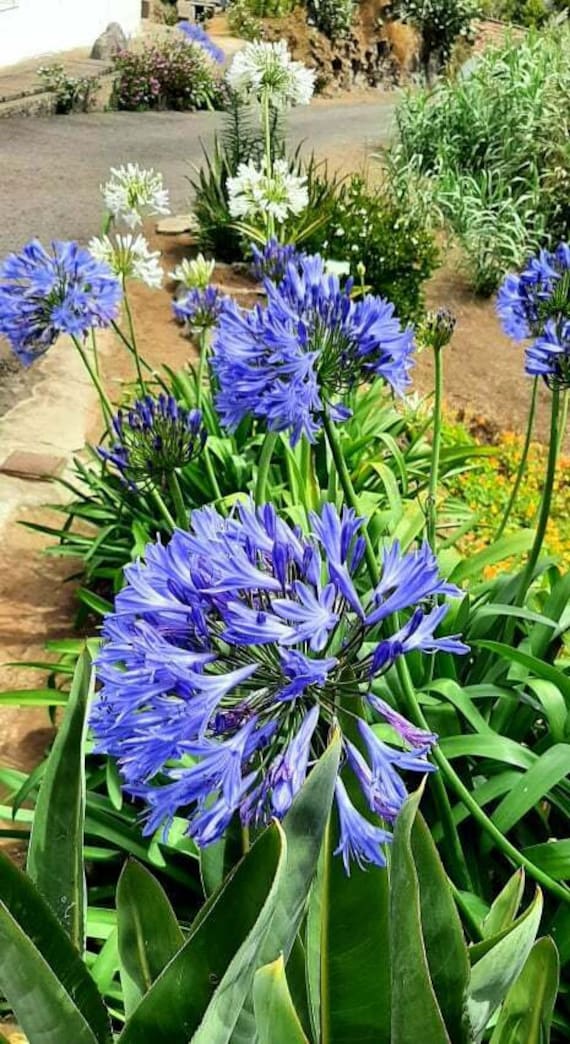Agapanthus Breeding: Tips for Expanding Your Plant Collection
Agapanthus Breeding: Tips for Expanding Your Plant Collection
Blog Article
Unleashing the Secret to Effective Agapanthus Farming: Advice for a Flourishing Yard
In the world of horticulture, cultivating agapanthus successfully requires a calculated approach that includes numerous elements of plant treatment. With cautious interest to detail, one can open the keys to nurturing these magnificent blossoms, bring about a yard that thrives with beauty and vibrancy. By understanding the subtleties of agapanthus farming, one can develop an environment where these plants flourish and flower generously. In the following discussion, we will certainly explore crucial tips and techniques that will guide you in the direction of a growing agapanthus yard, offering understandings into ideal techniques, soil problems, watering methods, and more.
Planting Agapanthus: Finest Practices
When growing Agapanthus, correct soil prep work is necessary for making certain effective growth and development of these stunning blossoms. Agapanthus, typically referred to as Lily of the Nile or African lily, grows in well-draining soil with a somewhat acidic to neutral pH level - Agapanthus. Before planting, it is critical to modify heavy clay soils with raw material such as garden compost or peat moss to boost drainage and give necessary nutrients for the plants
To grow Agapanthus, choose a location that receives full sunshine to partial color, as this will promote healthy and balanced development and abundant blooming. Dig a hole twice the size of the plant's root round and position the Agapanthus at the exact same depth it was previously growing. Carefully backfill the opening with soil, pushing down securely to remove any air pockets around the origins.
Water the freshly planted Agapanthus completely and proceed to keep the dirt equally wet, especially during the plant's energetic growing season. Agapanthus. Using a well balanced plant food once a month can even more support the plant's growth and flowering. By following these finest techniques for planting Agapanthus, you can develop a sensational display screen of these fascinating flowers in your garden
Perfect Dirt Issues for Agapanthus
For ideal growth and flowering success of Agapanthus plants, making sure the soil conditions are ideal is important. Agapanthus thrives in well-draining dirt with a somewhat acidic to neutral pH level varying from 6.0 to 7.0. This kind of dirt enables ample water drainage, stopping waterlogging which can cause root rot. To improve dirt drain, think about adding raw material such as compost or peat moss when preparing the growing site. In addition, Agapanthus likes soil that is abundant in nutrients, so including a well balanced plant food throughout the growing period can advertise healthy and balanced development and lively blooms.

Watering and Feeding Tips
To ensure healthy development and vivid blossoms, correct watering and feeding strategies are essential for effective Agapanthus growing. Agapanthus plants profit from regular watering, particularly throughout the growing season. It is suggested to water deeply when a week, making certain the soil is wet yet not soaked. Throughout heat or in pots, even more regular watering may be essential to stop the soil from drying completely.
When it pertains to fertilizing Agapanthus, a balanced fertilizer with equal parts nitrogen, phosphorus, and potassium can be applied in the springtime to promote healthy and balanced growth and blooming. Slow-release plant foods are optimal for providing nutrients progressively over an extended duration. Stay clear of over-fertilizing, as this can result in excessive vegetation growth at the expenditure of flowers.
In addition, incorporating raw material like garden compost into the dirt can improve nutrient levels and enhance soil framework, assisting in the overall wellness of the Agapanthus plants. By following these watering and feeding suggestions, gardeners can guarantee their Agapanthus plants grow and generate sensational displays of blossoms.
Pruning and Deadheading Methods
Proper pruning and deadheading techniques play a critical function in preserving the health and visual appeals of Agapanthus plants, enhancing the vital practices of watering and feeding for effective farming. Pruning Agapanthus entails getting rid of spent blossom heads, yellowing or dead leaves, and total shaping of the plant to promote better growth. Deadheading, the procedure of getting rid of discolored blossoms, not only improves the plant's look yet likewise urges further blooming.
When deadheading Agapanthus, it is recommended to clip off the blossom stem at the base making use discover here of sharp, clean shears. This process redirects the plant's energy from seed production back into root and vegetation growth, advertising a healthier and much more robust plant. Normal deadheading can prolong the flowering period of Agapanthus and stop self-seeding, which can lead to overcrowding.
In regards to trimming, Agapanthus typically benefits from a light trim after flowering to tidy up the plant and motivate fresh development. Reducing the spent flower stems and eliminating any type of broken or dead vegetation assists keep the plant's vitality and overall appearance. However, it is necessary to prevent reducing right into the crown of the plant, as this can damage its health.

Protecting Agapanthus From Pests and Diseases
Applying effective bug and condition management strategies is essential to protecting the wellness and vigor of Agapanthus plants in cultivation. Agapanthus are generally durable plants, yet they can still succumb numerous pests and conditions otherwise appropriately cared for. One usual pest that affects Agapanthus is the Agapanthus borer, a caterpillar that tunnels into the plant, creating damages to the leaves and blossoms. To stop infestations, regular inspection of the plants is essential. If published here borers are detected, they can be by hand removed, or insecticidal soap can be made use of as a control measure.
Along with pests, Agapanthus are at risk to illness such as root rot and fungal fallen leave areas. These concerns can usually be protected against by guaranteeing correct drain and staying clear of overwatering. Influenced parts of the plant should be quickly eliminated to avoid more spread if indicators of illness show up. Fungicides may additionally be made use of as a treatment procedure, complying with the producer's directions thoroughly. By staying alert and attending to bug and disease problems quickly, gardeners can assist their Agapanthus prosper this website and grow.

Final Thought
In conclusion, successful cultivation of agapanthus calls for correct growing techniques, perfect dirt problems, sufficient watering and fertilizing, normal trimming and deadheading, and protection from diseases and insects. By complying with these tips and methods, gardeners can make sure a prospering yard loaded with attractive agapanthus blooms. Agapanthus. Bear in mind to maintain consistent treatment and attention to detail to advertise the health and durability of these magnificent plants
When growing Agapanthus, proper soil preparation is crucial for guaranteeing successful development and growth of these lovely blossoms.Water the newly grown Agapanthus completely and continue to maintain the soil evenly wet, specifically during the plant's active expanding season.For optimal growth and blooming success of Agapanthus plants, ensuring the soil problems are perfect is important. When hair transplanting or growing Agapanthus, ensure the soil is well-prepared to give the necessary structure for the plants to develop themselves successfully. One usual bug that affects Agapanthus is the Agapanthus borer, a caterpillar that passages right into the plant, causing damage to the blossoms and leaves.
Report this page